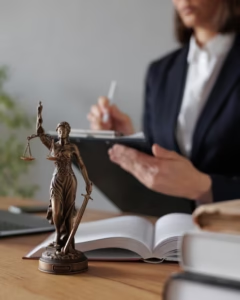In today’s digital and knowledge-driven world, creativity has become one of the most valuable assets. Writers, artists, musicians, filmmakers, software developers, designers, and innovators across industries contribute immensely to culture, education, technology, and entertainment. However, without adequate legal protection, their original creations can be easily copied, exploited, or misused. This is where Copyright Law plays a crucial role—it acts as the legal shield that safeguards intellectual creativity and ensures creators are rewarded for their hard work.
What is Copyright Law?
Copyright Law is a branch of Intellectual Property Rights (IPR) that grants exclusive rights to creators over their original works. These works may include literature, music, artistic pieces, films, software, photographs, architectural designs, and more. The essence of copyright is that it protects the “expression of ideas,” not the ideas themselves. For instance, if two authors write books on the same theme, both are protected, as long as the expression of the idea is original.
Key Features of Copyright Protection
- Exclusive Rights – The creator enjoys exclusive rights to reproduce, distribute, adapt, perform, or display their work.
- Automatic Protection – Copyright arises the moment a work is created and fixed in tangible form. Registration is recommended but not mandatory.
- Duration of Protection – Generally, copyright lasts for the lifetime of the creator plus 60 years (in India) after their death.
- Transferability – Copyright can be assigned, licensed, or transferred to others under legal agreements.
- Moral Rights – Even if the economic rights are transferred, the creator retains moral rights such as claiming authorship and objecting to modifications that harm their reputation.
Importance of Copyright Law
- Encourages Creativity – By ensuring that creators benefit from their work, copyright law motivates individuals to innovate and contribute.
- Economic Growth – Copyrighted works like films, music, and software form a major part of global economies.
- Cultural Preservation – Copyright law helps preserve and promote cultural heritage by protecting traditional art, literature, and music.
- Legal Remedies – It provides remedies against piracy, plagiarism, and unauthorized exploitation of works.
Challenges in Copyright Protection
With the rise of the internet, digital platforms, and AI-generated content, copyright law faces new challenges. Issues like online piracy, unauthorized streaming, software duplication, and digital content sharing test the boundaries of traditional copyright laws. Policymakers worldwide are constantly evolving legislation to keep pace with modern technology.
Conclusion
Copyright Law is not just about protecting the financial interests of creators—it is about respecting creativity, innovation, and cultural identity. In a fast-paced digital world where ideas and works can be duplicated within seconds, copyright remains the guardian of originality. Both creators and users must understand its importance to strike a balance between fair use and intellectual property rights.






